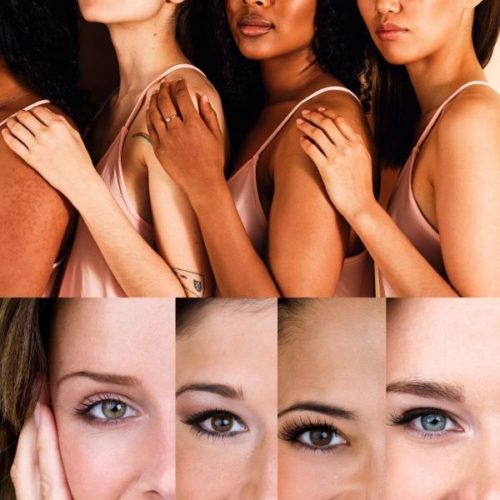Introduction
Such an important component of being culturally Indian is our skin colour.
There I have said it.
A friend from Africa recently attended a high-society soiree in India, and his recurring observation was (verbatim) this. Everyone outside my hotel is what I would expect Indians to look like. But inside my party, “I have never seen so many light skinned Indian people before.” He said that uniformly all of the Indian women were so light skinned, that they could be mistaken for Caucasians.
I have written about this before: there is much advantage in South Asian society to being fair or light skinned. Let’s not pretend this does not give advantage in the workplace or the dating market, because I can show you countless studies and data that support that fair skin is prized and valued by us.
You may believe that I should be advocating acceptance of darker skin and you would be wrong.
I am a dark skinned woman and I can accept that women make choices that don’t take the moral high ground, so that their lives are a bit easier. That the hope is that “aspirational fairness” translates into better school and job offers or more appeal to the opposite sex.
In my mind, this is a perfectly reasonable pursuit. I will not condone it. Period.
Does that mean I want to become lighter skinned?
No. I love the uneven complexion of my skin tone. I love how my body is lighter than my face and my feet are so dark they look as if they belong to another.
New educational series
Over the next few weeks, in very short and readable bursts, I will be discussing the geeky aspects of skin colour. WHY?
We are obsessed with skin lightening as a culture, but do you know the role skin pigment plays in our skin?
Melanin
Our skin colour is derived from the pigment, MELANIN. In humans, melanin is present throughout the body including at these sites: eyes, hair, skin, brain steam and the inner ear.

PHEOMELANIN
This pigment is yellow to reddish brown and you would recognize it in red-haired individuals
EUMELANIN
This pigment is black-brown in colour (and when the word melanin is used, its usually a reference to Eumelanin).
What gives our skin its colour?
Eumelanin is what gives our skin its colour. Studies show that pheomelanin is present in both light and dark individuals in similar amounts and does not contribute to skin colour.
Darker skinned individuals have more Eumelanin and its the ratio of Eumelanin/Total Melanin that is one of the most important factors that determines skin colour.
(Solminski et al 2004)
What is the function of melanin in the skin?
The reason to discuss the functionality of melanin is twofold:
First, to become lighter skinned, melanin has to reduce in the epidermis. Second, skin lightening products specifically aim to reduce melanin in the skin AND some ingredients are more aggressive than others.
BUT you need to appreciate what FUNCTION becomes less as a result of less melanin in the skin.
Function
The most important function is melanin’s photoprotective and anti-oxidant properties.
“Generally speaking the melanin in the skin and eyes acts as a a natural sunscreen that absorbs and scatters solar radiation (particularly energetic UV and short wavelength visible photons) and protects the pigmented tissues…”
Secondly, melanin acts as a free radical scavenger and therefore as an anti-oxidant.
photooxidative damage with long-term detrimental effects like photoaging, characterized by wrinkles, loss of skin tone and resilience
Therefore reducing melanin in the skin, will by default means MORE photoaging, which is characterized by:
- Wrinkles
- Loss of Skin tone and resilience (less collagen in the skin)
- Pigmentation
- Dark spots
Sources and uses
Sarna T, Paul M The physical and chemical properties of eumelanin Pigment Cell Res 19: 572-594
Mostert A Melanin, the What, the Why and How: An Introductory review for material scientists interested in flexible and versatile polymers Polymers 2021, 13, 1670
Rees, J.L. (2004). The Genetics of Sun Sensitivity in Humans. Am. J. Hum. Genet. 75, 739–751
Armstrong, B.K., and Kricker, A. (2001). The epidemiology of UV induced skin cancer. J. Photochem. Photobiol. B. 63, 8–18
Tadokoro, T., Kobayashi, N., Zmudzka, B.Z., Ito, S., Wakamatsu, K., Yamaguchi, Y., Korossy, K.S., Miller, S.A., Beer, J.Z., and Hearing, V.J. (2003). UV-induced DNA damage and melanin content in human skin differing in racial/ethnic origin. FASEB. J. 17, 1177–1179
Wlaschek, M., Tantcheva-Poor, I., Naderi, L., Ma, W., Schneider, L.A., Razi-Wolf, Z., Schuller, J., and Scharffetter-Kochanek, K. (2001). Solar UV irradiation and dermal photoaging. J. Photochem. Photobiol. B. 63, 41–51
